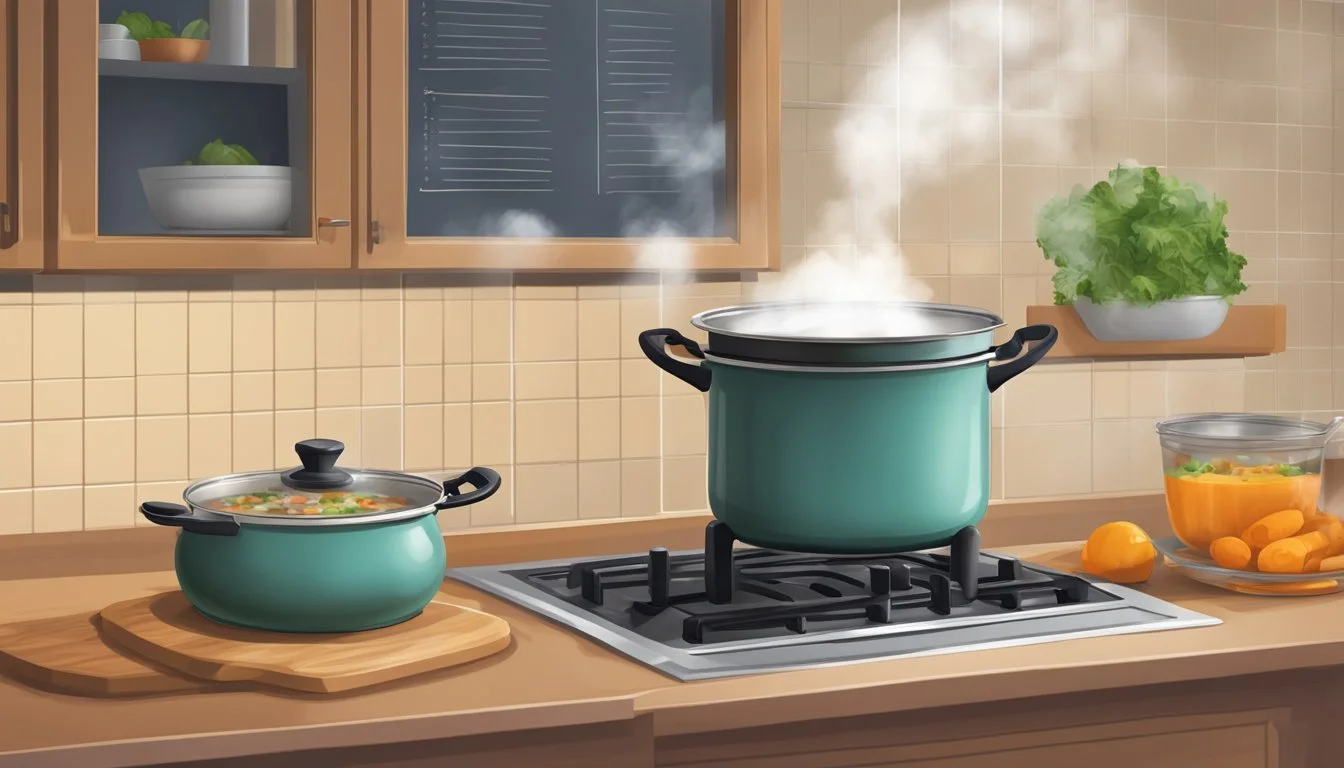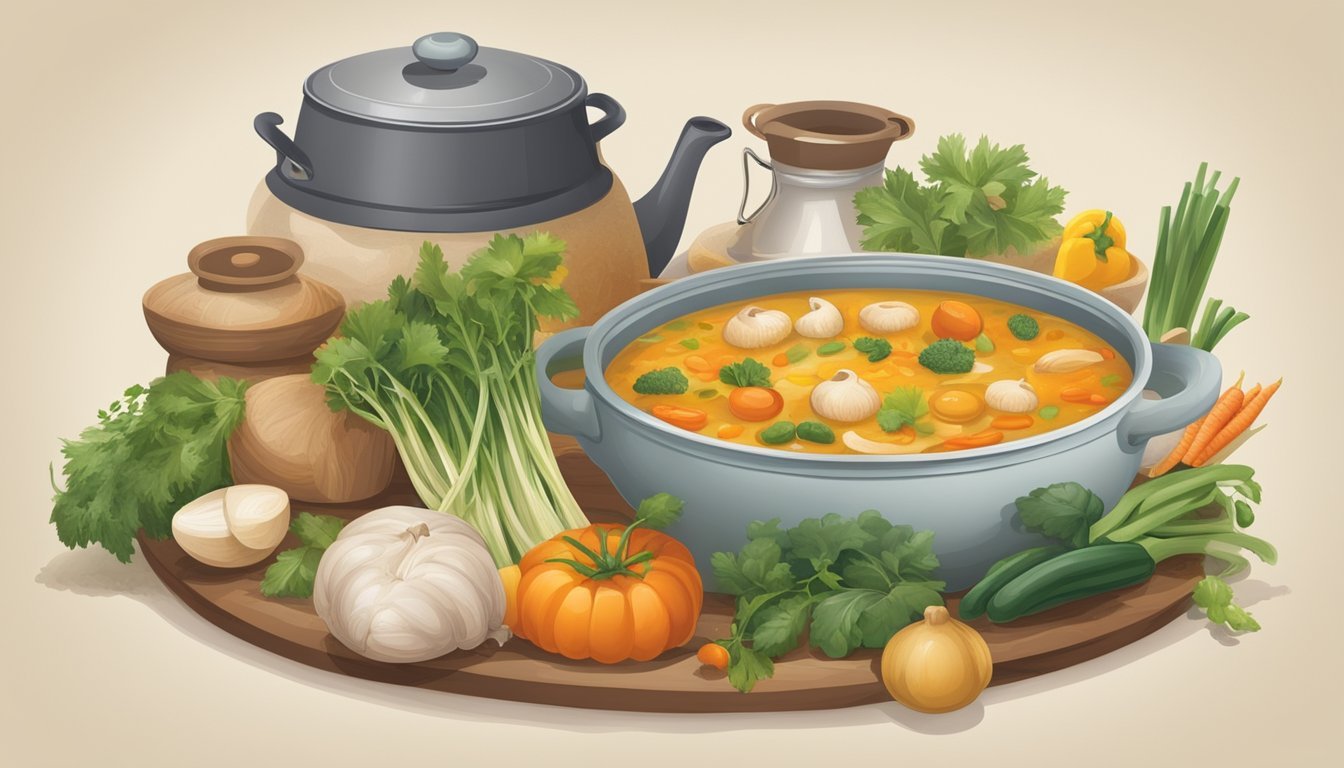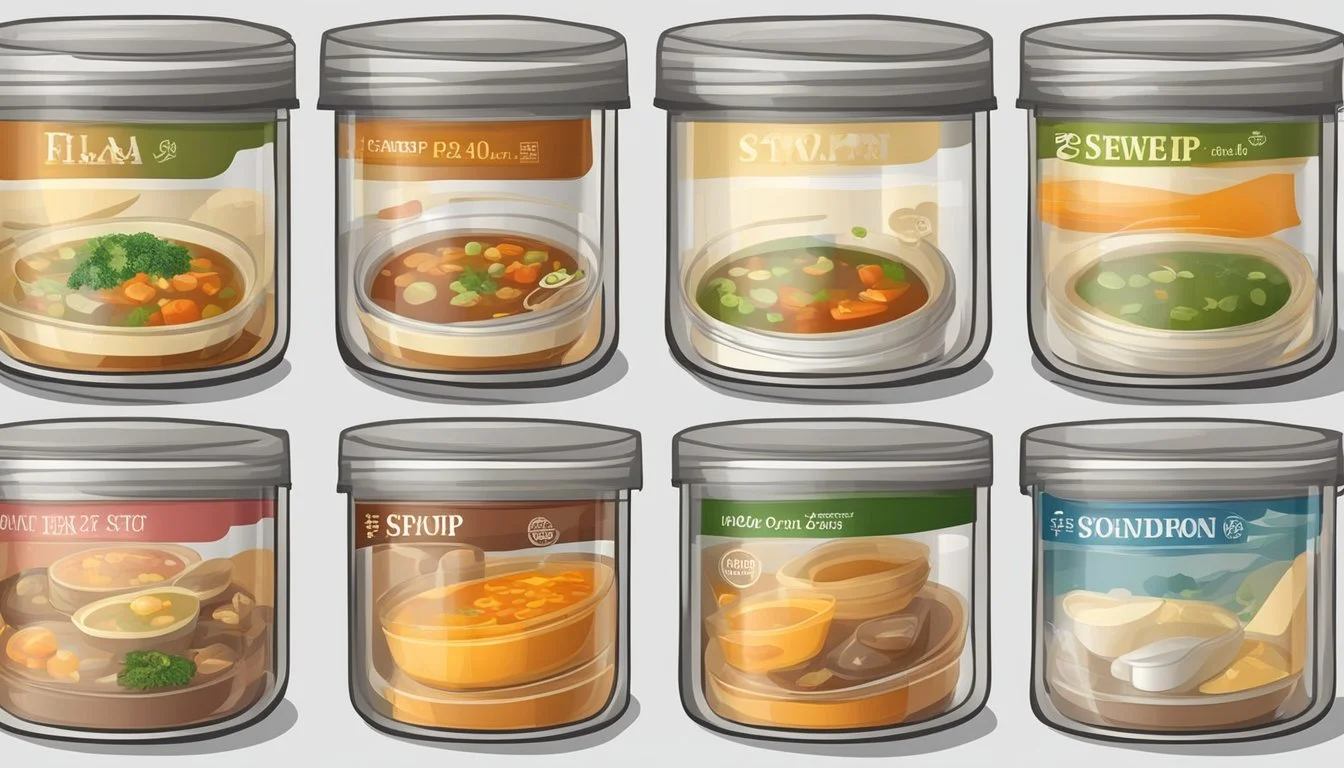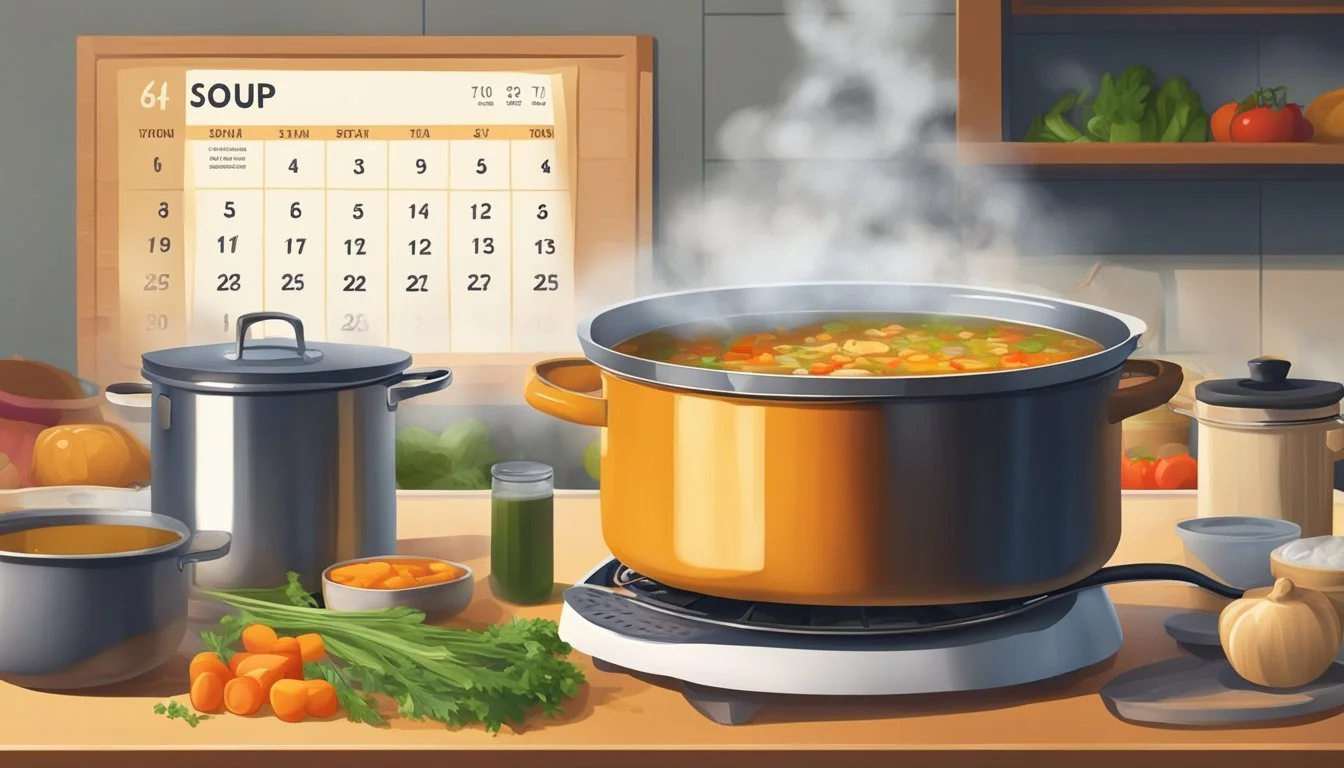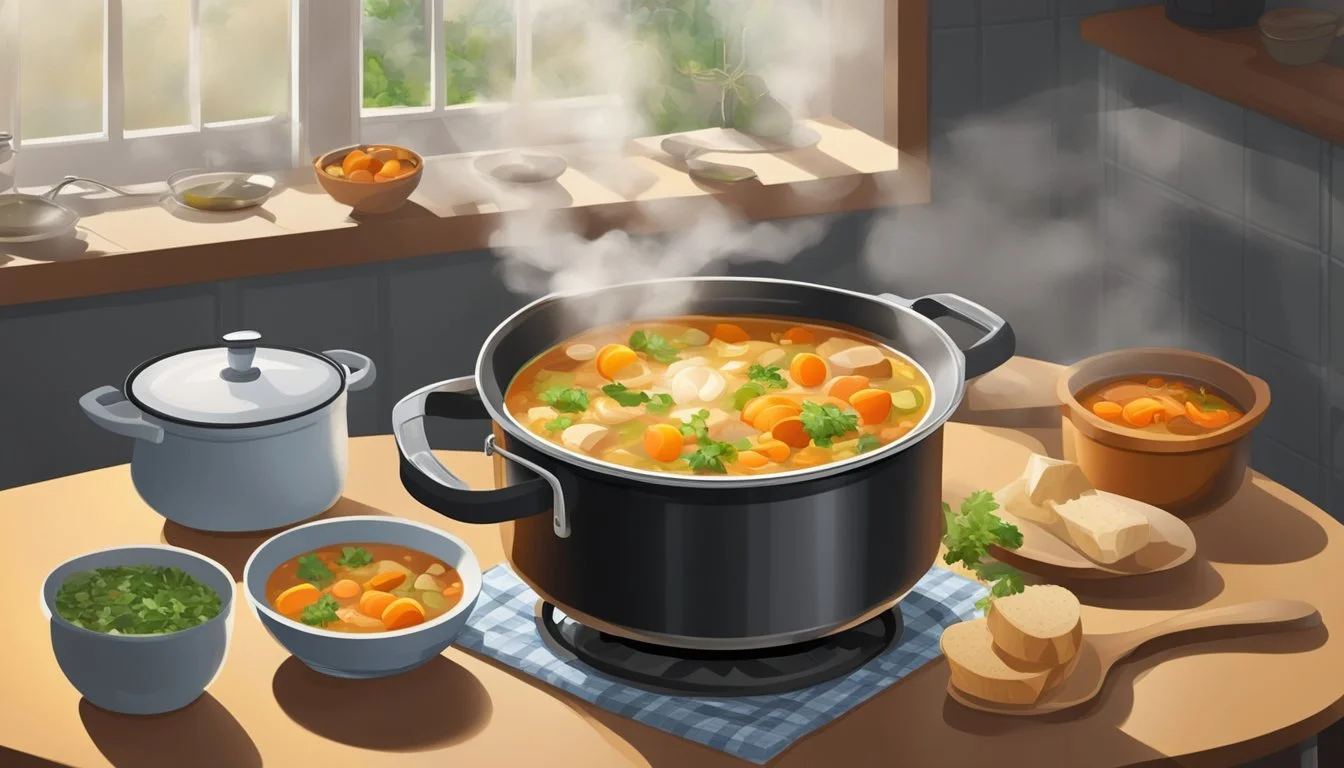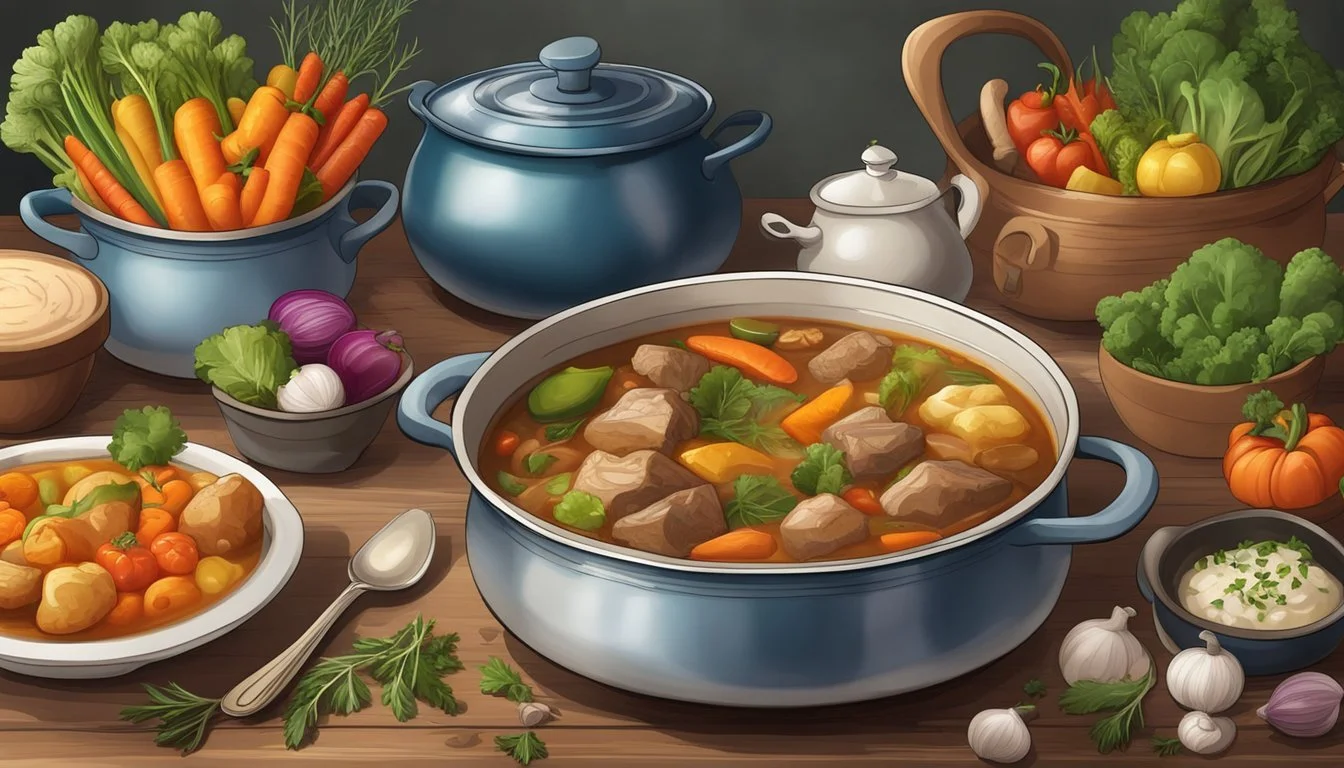How Long Do Fresh Soups and Stews Last?
Shelf Life and Storage Tips
When it comes to the shelf life of homemade soups and stews, proper storage is key to maintaining freshness and ensuring food safety. Generally, these comforting dishes can be safely stored in the refrigerator for about three to four days. The exact duration can vary depending on the ingredients used and how quickly the food was cooled and refrigerated after cooking.
For optimal freshness, soups (What wine goes well with soups?) and stews (What wine goes well with stews?) should be placed into airtight containers and stored in the fridge within two hours of cooking. This mitigates the risk of bacterial growth that can occur at room temperature. Some soups, particularly those with acidic components like tomatoes, may last a bit longer due to their natural preservative qualities. On the other hand, cream-based soups might have a shorter fridge life due to the dairy content.
One should always rely on both sensory evaluation—checking for off-odors or visual spoilage—and compliance with recommended storage times before deciding to consume refrigerated soups or stews. If intending to keep them longer, freezing is an effective preservation method, extending their shelf life for several months. It's important to cool the soup completely before freezing it in portion-sized containers, allowing for easier thawing and minimizing waste.
Understanding Food Safety
Food safety is a crucial consideration when storing fresh soups (how long do fresh soups and stews last?) and stews, as improper handling can lead to bacterial growth and foodborne illness. Ensuring the longevity and safety of these dishes involves understanding various factors including shelf life, proper temperature control, and recognizing spoilage signs.
Shelf Life Factors
Several factors influence the shelf life of soups and stews. These include the ingredients used, the method of preparation, and how the food is stored after cooking. For example:
Acidity: Soups with a higher acidity, such as those containing tomatoes, can often inhibit bacterial growth and may last longer.
Dairy and Meat Contents: Dishes that include dairy or meat should be consumed more promptly since these ingredients can spoil more quickly.
Safe Temperature Guidelines
Maintaining safe temperatures for food storage is essential to minimize the risk of bacterial growth. Here are key temperature guidelines:
Refrigeration: Soups and stews should be stored at a temperature of 40°F (4°C) or below.
Freezing: To extend shelf life, freezing is effective. Ensure the temperature is 0°F (-18°C) or below.
Reheating: The food must reach an internal temperature of 165°F (74°C) for at least 15 seconds to kill most bacteria.
Recognizing Spoilage Signs
Recognizing the signs of spoilage can prevent foodborne illnesses. Telltale signs include:
Odor: An off or sour smell is a strong indication that a soup or stew should not be consumed.
Texture: Any signs of mold or a slimy texture on the surface are clear signs of spoilage.
Taste: If the food tastes off, it should not be eaten. Tasting should be done cautiously and only when other spoilage signs are not present.
By adhering to these food safety principles, one can help ensure that fresh soups and stews are stored safely and maintain their quality for the recommended time frames.
Storing Soups and Stews
Proper storage methods are essential to maintaining the quality and safety of fresh soups and stews. These dishes can last for varying periods depending on how they are stored. Below are effective practices for refrigeration and freezing.
Refrigeration Best Practices
For refrigeration, soups and stews should be placed in the refrigerator within two hours of cooking to prevent bacterial growth. They should be stored in airtight containers to maintain freshness and avoid absorption of other flavors. Here's a concise guide on refrigeration:
Container choice: Use glass or BPA-free plastic containers with snug-fitting lids.
Temperature: Keep the refrigerator at or below 40°F (4°C).
Shelf life: Vegetable-based soups can last 3 to 4 days, while those containing meat, poultry, or fish should be consumed within 3 to 5 days.
Freezing for Longevity
Freezing soups and stews extends their shelf life, making it a practical option for long-term storage. Here's how to freeze them properly:
Cooling: Let the soup or stew cool to room temperature before freezing.
Containers or freezer bags: Use airtight containers or heavy-duty freezer bags to prevent freezer burn.
Excess air: Remove as much air as possible from freezer bags to maintain quality.
Labeling: Mark containers or bags with the contents and date of freezing.
Shelf life: Most frozen soups and stews keep well for 2 to 3 months for optimal taste, though they remain safe beyond that period.
Freezing Techniques
When preserving soups and stews for long-term storage, the key is to protect their quality and prevent freezer burn. Proper technique ensures soups and stews are fresh upon thawing.
Preparing Soups for Freezing
Before freezing soup, ensure it's cooled completely to prevent the growth of bacteria. Use airtight containers or freezer bags to prevent ice crystals from forming, which can ruin the soup's texture. Leave 1/2 to 1 inch of headroom at the top as liquids expand when frozen. Label containers with the date and type of soup to keep track of what you have.
Freezing Stews Properly
Stews often contain chunks of meat and vegetables which can be sensitive to freezer burn. To properly freeze stews, transfer them into freezer-safe containers, leaving appropriate headroom for expansion. If storing in plastic, ensure it's freezer-grade to prevent chemicals from leaching into the food. For optimal texture, cool the stew before transferring it to the freezer.
Thawing and Reheating
When thawing and reheating soups and stews, it is crucial to maintain food safety while preserving flavor and texture. These processes should be done carefully to prevent bacterial growth and ensure the dish is heated evenly.
Safe Defrosting Methods
In the Refrigerator:
Timeline: Allow soup to thaw in the refrigerator for several hours up to a full day, depending on the quantity.
Temperature: The refrigerator temperature should be below 40°F to inhibit bacterial growth.
In Cold Water:
Instructions: Place the soup in a leak-proof bag and submerge it in cold water, changing the water every 30 minutes.
Duration: Thawing soup using this method typically takes at least an hour.
Reheating with Preservation
Using a Microwave:
Steps:
Transfer soup to a microwave-safe bowl.
Cover with a microwave-safe lid or plate.
Heat on medium power for 2 minutes.
Stir and continue heating in 30-second intervals until evenly warm.
Note: Stirring is important for uniform heating.
On the Stovetop:
Method: Pour soup into a pot and reheat over low to medium heat, stirring occasionally.
Consideration: Slow and gradual reheating helps preserve the flavor and prevents scorching.
Temperature Check:
For both methods, ensure the soup reaches an internal temperature of 165°F before serving to eliminate any harmful bacteria.
Ingredients Impact on Longevity
The shelf life of fresh soups and stews depends greatly on their ingredients. Specific components, such as dairy and meats, can affect how long these dishes remain safe for consumption.
Dairy and Cream-Based Soups
Fresh soups that contain dairy or cream have a shorter lifespan in the refrigerator due to the nature of dairy products, which are prone to spoilage. Typically, these soups should be consumed within:
3 to 4 days if stored properly at a temperature below 40°F (4°C).
Noodles and pasta, when included in cream-based soups, can absorb liquid and become mushy, potentially shortening the storage life further due to textural degradation.
Meat, Grains, and Vegetables Considerations
Soups and stews with meat, grains, beans, or vegetables require careful attention as these ingredients can influence the storage time.
Meat: When a soup or stew contains meat, it's essential to cool it rapidly to prevent bacterial growth. Meat-containing dishes should typically be consumed within:
Meat Type Refrigerated Shelf Life Poultry 3 to 4 days Beef 3 to 4 days Seafood 2 to 3 days
Grains and Starches: Rice, pasta, and potatoes can become overly soft over time, affecting the overall texture of the soup or stew.
Vegetables: Hearty vegetables tend to hold up well, but they can still contribute to the overall degradation of the dish after several days:
Leafy greens: Quicker to wilt and degrade.
Root vegetables and hardier types like carrots and potatoes: Longer-lasting.
Stock and broth-based soups without dairy or meat can typically last a bit longer, potentially up to:
Stock or Broth Type Refrigerated Shelf Life Vegetable 4 to 5 days Meat-Based 3 to 4 days
By considering these specific ingredient impacts and proper storage methods, one can maximize the freshness and safety of their soups and stews.
Containers and Labeling
Proper storage is essential for maintaining the quality and extending the shelf life of homemade soups and stews. The selection of appropriate containers and thorough labeling are key to achieving this.
Choosing the Right Containers
One must select containers that are airtight to keep food fresh and prevent freezer burn if frozen. Plastic containers and freezer bags are commonly used due to their durability and ease of use. Quart-sized containers are suitable for individual servings, while larger containers may be used for family-sized portions. When using a ladle to transfer soup to containers, be cautious not to overfill—leave some space to allow for expansion, especially if the soup will be frozen.
Labeling for Optimal Organization
Labeling is vital for identifying the contents and tracking the storage duration. Mark each container with the following:
Contents: Specify the type of soup or stew.
Date of Storage: Write down the date when the soup was stored to keep track of freshness.
Reheating Instructions: Provide a brief note on how to properly reheat the soup or stew, if needed.
Labels should be clear and legible. Adhesive labels or freezer-safe markers can be used directly on plastic containers or freezer bags.
Maximizing Soup and Stew Quality
Preserving the quality of soups and stews involves careful storage practices to maintain their flavor, texture, and safety. Proper techniques can significantly extend a dish's shelf life while keeping it tasting fresh.
Avoiding Freezer Burn
To prevent freezer burn, which can compromise the texture and flavor of soups and stews:
Cool the dish completely before freezing to prevent ice crystals from forming.
Transfer to airtight containers or heavy-duty freezer bags, labeling with the date.
Leave some space at the top of the container as liquids expand when frozen.
Press out excess air from freezer bags before sealing to minimize exposure to air.
Maintaining Texture and Flavor
For optimal texture and flavor retention:
Refrigerate soups and stews promptly within two hours of cooking.
Store in the fridge for 3-5 days in well-sealed containers to safeguard against aroma and flavor loss.
Avoid repeated reheating as it can break down ingredients and dull the flavor profile.
By adhering to these storage practices, one ensures that their soups and stews remain both safe to consume and pleasing to the palate.
Alternative Preservation Methods
When extending the shelf life of homemade soups and stews beyond the typical refrigerator window, canning represents a reliable method, while leveraging the capabilities of modern refrigerators can also prove beneficial.
Canning Soup Safely
Canning is an effective way to preserve soups for extended periods. The process typically involves two main approaches: pressure canning and water bath canning. Pressure canning is necessary for non-acidic soups, such as those containing meat or vegetables, because it reaches higher temperatures than boiling water—eliminating the risk of botulism. One must use a pressure canner and adhere to strict procedures and tested recipes for safety.
Fill your stockpot with soup, leaving a gap at the top of the jar for expansion.
Position jars in the pressure canner with the appropriate amount of water.
Remember: To ensure safety, always follow a tested recipe specifically developed for canning.
Utilizing Modern Refrigerators
Modern refrigerators provide features such as consistent temperature control and humidity settings, which are instrumental in prolonging the freshness of soups. When storing soup, do so in sealed containers and place them in the fridge as soon as the temperature drops to a safe level to mitigate bacterial growth.
Use airtight containers to maintain quality.
Store soups at refrigerator temperatures of 40°F (4°C) or below.
Metadata Table for Refrigerator Storage:
Temperature Range Expected Shelf-life of Soup Below 40°F (4°C) Up to 3-4 days
When storing soups or stews, these preservation methods help maintain freshness and flavor while ensuring food safety.
Soup and Stew Recipes Adaptations
When adapting soup and stew recipes for longevity, chefs need to consider how the ingredients and cooking methods will fare during freezing and thawing. Freezer-friendly modifications can transform a perishable dish into a lasting comfort food, preserving the taste and nutritional value.
Adjusting Recipes for Freezing
Adapting recipes for freezing involves considering the texture of vegetables and proteins after thawing. Cooks should:
Partially cook vegetables: Vegetables should be slightly undercooked to prevent becoming mushy when reheated.
Avoid dairy: Milk, cream, and cheese can separate and grain when frozen, so it's wise to add these after thawing.
Freezing spices: Spices like cumin or coriander can become more potent in the freezer; chefs should use a lighter hand or add them when reheating.
Consider the noodles: If making Minestrone or Italian Wedding soup, add pasta after thawing to maintain its texture.
Creating Freezer-Friendly Soups
Chicken Soup: Shred the chicken finely and ensure the broth is clear before freezing to maintain its comforting qualities.
Minestrone: Load it with hearty vegetables, such as carrots and zucchini, dried lentils, or barley, but add pasta post-freezing.
Creamy Soups: For creamy soups, purée them thoroughly before freezing, and add the dairy when reheating to avoid separation.
Italian Wedding Soup: Form small, well-cooked meatballs and integrate leafy greens like spinach, adding them late in the cooking to stay vibrant.
Seasonal and Comfort Food Considerations
When considering the lifespan of soups and stews, seasonal preferences and the inherent qualities of comfort food play pivotal roles. During colder months, the desire for hearty meals increases, while family gatherings often call for time-honored recipes.
Winter Warmers
In winter, the craving for warm, comforting dishes leads many to create robust soups and stews. Hearty ingredients such as root vegetables and slow-cooked meats are not only satisfying but also tend to be more forgiving in terms of storage longevity. A thick beef stew (What wine goes well with beef stew?) or chicken soup, when stored properly, can generally last three to five days in the refrigerator as the deep flavors mature, enhancing the overall taste.
Key Ingredients for Longevity: Root vegetables, acidic components like tomatoes, meats
Optimal Storage Temperature: Below 40°F (4°C)
Family Favorites
Family gatherings often feature cherished recipes for soups and stews that have been passed down through generations. These comfort foods, steeped in tradition and shared among loved ones, usually see a variety of ingredients coming together. Dairy-based or cream soups, a frequent comfort food component, should be consumed sooner, typically within three days, to maintain their quality and prevent spoilage.
Earmarks of Family Comfort Foods: Cream soups, homemade broths, traditional stews
Storage Suggestions: Airtight containers, prompt refrigeration within two hours of cooking, adequate cooling before sealing
By acknowledging the seasonal and familial aspects that influence the preparation and enjoyment of these dishes, one can better understand their storage and shelf life within a domestic setting.

